With the onset of autumn, a favorable time comes for the implementation of plantings, including for thuja. Thuja planting in autumn is more favorable than summer or spring, so it has spread most among gardeners. Recommendations and advice of experienced farmers will tell about technology and planting features, as well as about its step-by-step description.
Content
About the benefits of autumn planting
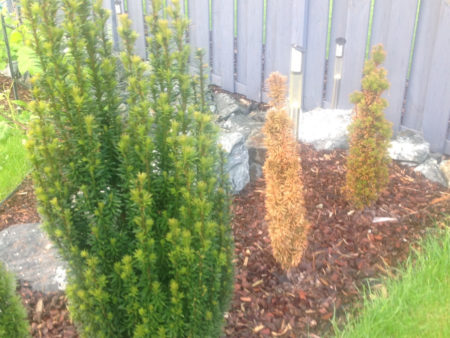
In the autumn, after harvesting, free time appears, so you can safely choose a tree seedling, fertilize the soil and begin planting. You decided to plant thaw in the fall and did it right, because:
- the earth has already been saturated with moisture and nutrients since the summer;
- seedlings can be bought at a significant discount;
- no need to buy specially mulch, use a heap of autumn foliage, mowed grass;
- there is no strong sun and heat;
- minimal risk of contracting disease;
- after wintering, the thuja will strengthen its immune ability.
In addition to the advantages, there are still risks. This may be the wrong time for planting thuja in the fall, for example, you planted a plant in frost and poorly insulated soil. Then a weak root system will not withstand frost, and the tree will die.
Features of landing thuja in the fall
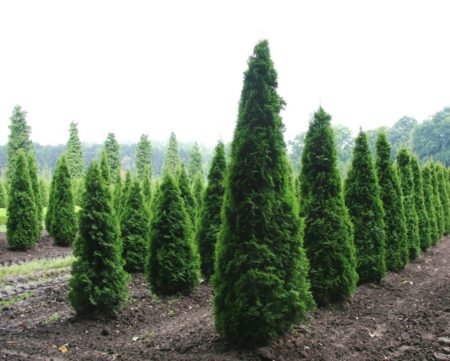
Thuja is considered a low-cap plant and takes root well if all the conditions for its cultivation are met. Take some time and learn the nuances before planting the plant, then it will delight you with a green juicy crown all year round:
- if you have chosen a seedling with an open root system, you must plant it between late August and October. Planting dates depend on the type of plant. Seedlings from containers can be planted before the beginning of November, they are more resistant to cold snap;
- during autumn planting, it is not advisable to feed;
- it is necessary to use mulch to warm the root system;
- landing should be done before the first snow;
- after planting, the tree needs to be protected from sunlight, and the crown - from frost.
Before you begin planting, select a quality seedling with a good root system, determine the place where the tree will be grown. The further life of the culture, its health and appearance depends on the correctness of simple tasks.
Choosing a place to land
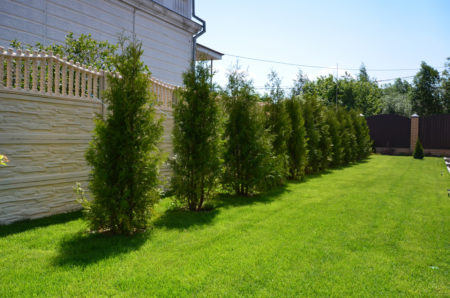
Thuja does not like direct sunlight, so choose a dimly lit place or a spot with diffused lighting for it. It is advisable that the site be protected from winds from the north side, as a small tree can bend or break from a constant draft. In the shade of large trees, the culture will grow slowly, so it would be better if it is placed at some distance from high plantations. The groundwater level at the landing site may be low. Thuja loves moisture in the earth, so for her it would even be a suitable option.
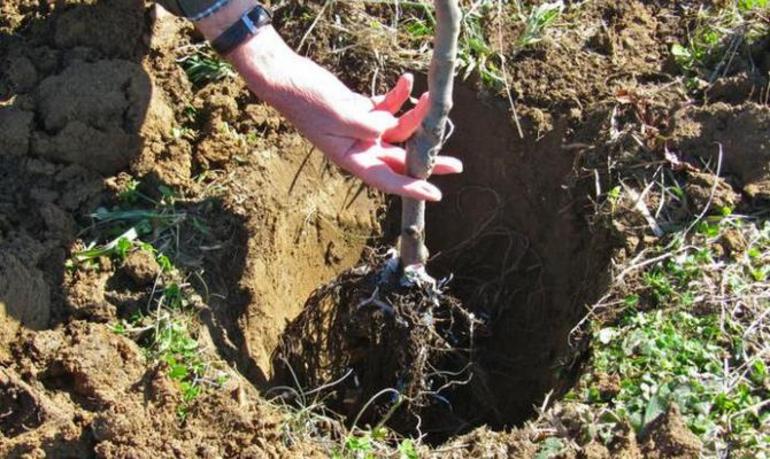 You may be interested in:
You may be interested in:Even if you have already planted a plant, but realized that the choice of place was wrong, there is time to transplant the seedling. The full adaptation of the thuja to a specific place is stretched and takes about 5 years.Therefore, wait for the autumn period and transplant the plant to a new place.
Choose a seedling
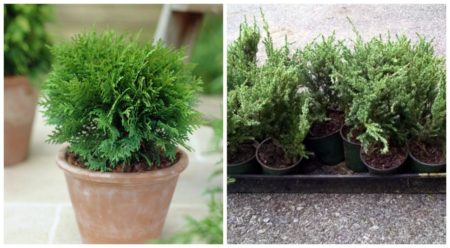
To buy a good tree seedling, go to the nursery. Choose planting material in the market, horticultural fair, but be extremely careful. A healthy seedling should be:
- with whole, good shoots;
- with a branched root system;
- with a slightly damp earthy lump.
Carefully inspect the needles of the tree. It should be green, thick. The needles of a healthy plant tightly fit almost to the center of the trunk, the tree has no bare patches. If you are buying a plant planted in a pot, turn the pot over. Too overgrown roots peeking out from drainage holes are a sure sign that the tree has already grown. In addition, when buying a plant in a pot, see that the substrate covers the root system completely. There should not be air roots.
Landing process
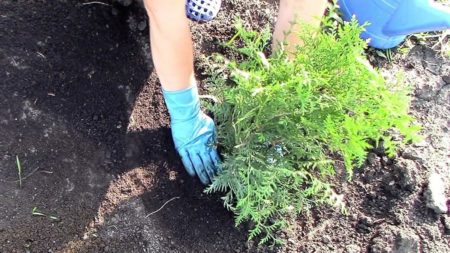
You bought a seedling and brought it to the country, you have chosen a place, now you can begin the planting process. First you need to prepare a pit, add drainage to it, and then increase the fertility of the earth. If the soil on the site itself is quite fertile, contains a large amount of organic matter and minerals, then it is not necessary to fertilize such land. About landing thuja in the fall with technology and a step-by-step description is described in detail below.
Pit preparation
Before digging a hole, look at the root system of seedlings. Using a tape measure or just an eye, imagine the approximate length of the roots and double it twice. The value that you have is the depth of the landing pit. It is best to plant thuja to a depth of 50-70 cm, no more. The diameter of the pit should be no more than 1 m.
When planting on a plot of several trees, observe the distance between them, at least half a meter. Too frequent planting leads to the fact that the plants become crowded, the root system receives insufficient nutrition, and the tree will begin to hurt over time. For a thuja, it is better to choose a chess scheme for planting, it is convenient both for plants and for their maintenance.
Drainage
So that the soil where the tree grows does not overflow, it is necessary to lay the drainage layer before planting. Drainage will absorb excess moisture, and at a low level of groundwater will protect against decay of thuja in the ground. As drainage most often used:
- expanded clay;
- small gravel;
- crushed brick.
Clay earth is especially in need of drainage. The solid material must be crushed before filling in the pit to the state of crumbs or small pieces. Then, a drainage layer with a height of about 15-20 cm is laid in the hole. This value is quite enough for growing thuja.
We fall asleep with a substrate
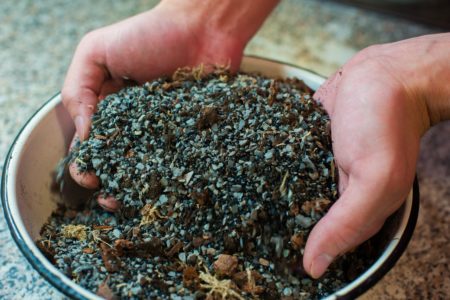
The more fertile the soil for backfill, the better the plant will subsequently look. When digging a hole, divide the earth into 2 layers: lower and upper. The upper one is considered more valuable because it contains nutritional components. Soil for thuja should consist of:
- a mixture of peat, river sand, land in a ratio of 1: 1: 2;
- a mixture of sheet earth, peat sand, humus in a ratio of 2: 2: 1: 3;
- a mixture of turf land, sand and humus in a ratio of 3: 1: 2.
Fill the hole with nutritious soil mixture about half the volume, and then remove the seedling from the container and, together with the earthen lump, drip it with the remaining soil. The root neck of the plant must be left outside, not drip with earth. However, if it is raised too high, the young thuja may begin to dry. The correct option is when the root neck is located at the level of the soil surface.
Follow-up care
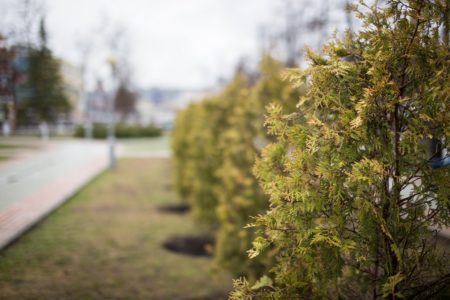
Immediately after planting, water the plant with water: the soil should be compacted, and the air voids will disappear. For quick rooting, use root supplements such as "Kornevina", "Zircon", "Epina". Mulch the near-stem circle with peat mixture and cover with lapnik. You can take wood chips, compost or crushed bark as mulch. Mulch will facilitate plant survival in a new place, protect from frost and retain moisture in the soil. The thickness of the mulching layer should not exceed 7-10 cm.
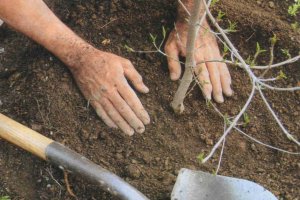 You may be interested in:
You may be interested in:In addition to mulching, further care consists of:
- removal of dry processes. The procedure must be performed in spring and late autumn;
- crown formation. For a culture to grow beautiful, it needs to be trimmed. The root is laid while the plant is still growing;
- fertilizing fertilizers. An evergreen needs regular supplementation;
- constant watering. If there is a drought or there has not been rain for a long time, the tree should be watered;
- treatments for diseases and pests. For their conduct, the most commonly used powder is “Karbofos” and fungicidal agents.
Thuja is not considered a finicky plant, however, failure to fulfill any condition can immediately affect the appearance. For example, with a lack of nutrition or watering, the needles begin to change the green color to yellow, and the tree slows down in growth. When these signs appear, think about whether you care for the culture.
Coniferous dressings

Young gardeners are interested in whether it is possible to feed a tree immediately after planting? The answer is no. Only every 2-3 years does the tree need to be applied root dressing. If the land is poor, then fertilizing should be done annually. In the case of laying fertilizers during planting, fertilizing is not carried out for another 2 years, since there is still enough nutrition in such soil.
The best time to use fertilizers is spring and autumn. In spring, it is better to introduce organic components, but only with a minimum nitrogen content, since the tree does not respond well to it. Good fertilizers for the culture are humus and compost. In late summer and autumn, it is preferable to use additives based on potassium and phosphorus: superphosphate, potassium sulfate, any other potassium salts.
How to shelter for the winter
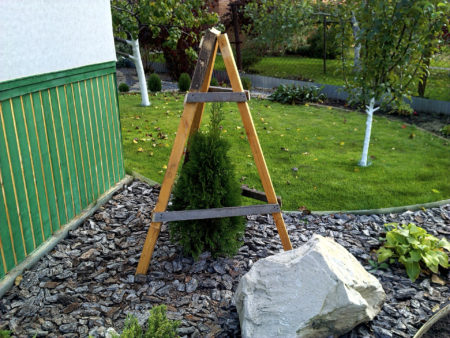
Be sure to hide the young tree before wintering. Its root system is still weak, so frost is fatal. Mulch the ground with peat, and wrap the tree itself with light, but breathable material. In no case should you use black cloth or film for shelter. The process of photosynthesis lasts all year round, without interruption, so the thuja needs light. Choose any material for shelter from the following:
- sackcloth;
- gauze;
- spanbond;
- agricultural span;
- craft;
- loutrastil.
When the snow falls, remove it from the branches so that they do not sag. It is necessary to cover thuja when in the region the temperature in winter does not rise above -15, and frosts of -30 degrees occur regularly. For the middle zone and the south of the country to cover a tree for the winter only necessary until the age of 3-4 years. The culture tolerates further wintering without problems.
Types of landing errors
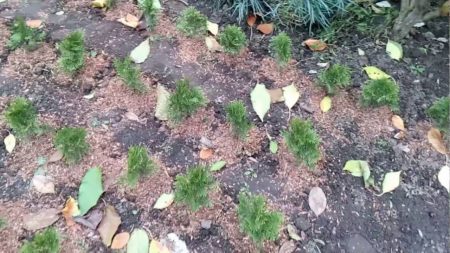
Inexperienced gardeners sometimes make mistakes, and their wrong actions have a sad outcome. To properly plant thuja in the fall, pay attention to the most common mistakes:
- a lump of earth was damaged, which means there is a risk of damage to the root system. When you pull the plant out of the container, wrap with a piece of gauze so that the earth does not crumble;
- Incorrect landing pit size. Too tight pit, as well as too large, is the reason for the slow growth of the plant.The situation can be corrected, you just need to transplant the culture into a new hole of the right size;
- violations in the landing technology itself: deepening of the root neck, lack of drainage adversely affect the growth of thuja;
- excessive shelter for the winter. If the winter is warm, and you wrapped the plant in 2-3 layers of burlap, it is likely that it will overheat.
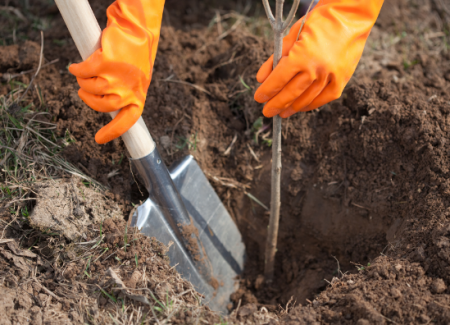 You may be interested in:
You may be interested in:Since the tree has several varieties, the autumn planting of thuja is carried out in different ways. For example, the planting of thuja smaragd is carried out immediately in the beginning of autumn, at the end of October it is undesirable to plant a plant.
Gardener Tips
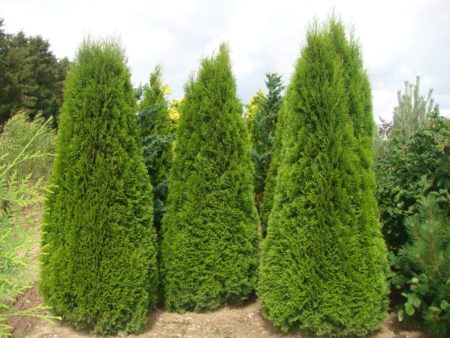
If you have never grown a crop before, then select the species that best suits the climatic features of your region. Western thuja is well suited for beginners, as it is unpretentious in leaving, adapts to any climate. Follow a few simple practical tips, they will help in growing and facilitate care:
- For irrigation, take cool water with low hardness. Water can be filtered or let it settle. The irrigation rate per tree is 10 liters;
- in the summer heat, so that the crown does not heat up, pour it from the hose. Be sure to adjust the pressure of the jet, it should not be strong;
- When trimming, remove about 1/3 of the total number of shoots. The tool (pruner, knife) must be clean. It can be treated with potassium permanganate for disinfection;
- in the event of dead shoots, darkening of the needles, clean the damaged areas immediately. Untimely removal of already spoiled places develops a risk of the development of pathogenic microorganisms, and creates a favorable environment for insects.
With the planting of a thuja, your garden will noticeably green. The tree is in harmony with cypresses, hydrangeas, acacias, astilbe. If you planted several plants, then over time you can create a beautiful hedge. A healthy thuja is an ideal solution to a design problem, because you can give it any shape and realize any idea from it.

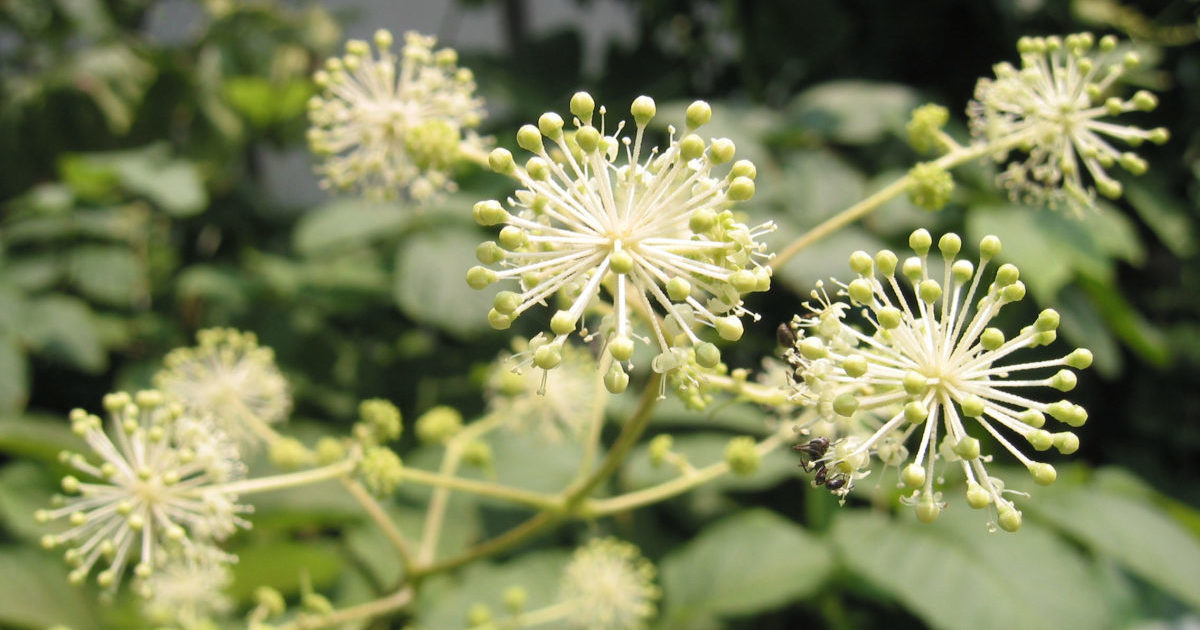 Aralia Manchurian - medicinal properties and contraindications, the use of tinctures in bodybuilding
Aralia Manchurian - medicinal properties and contraindications, the use of tinctures in bodybuilding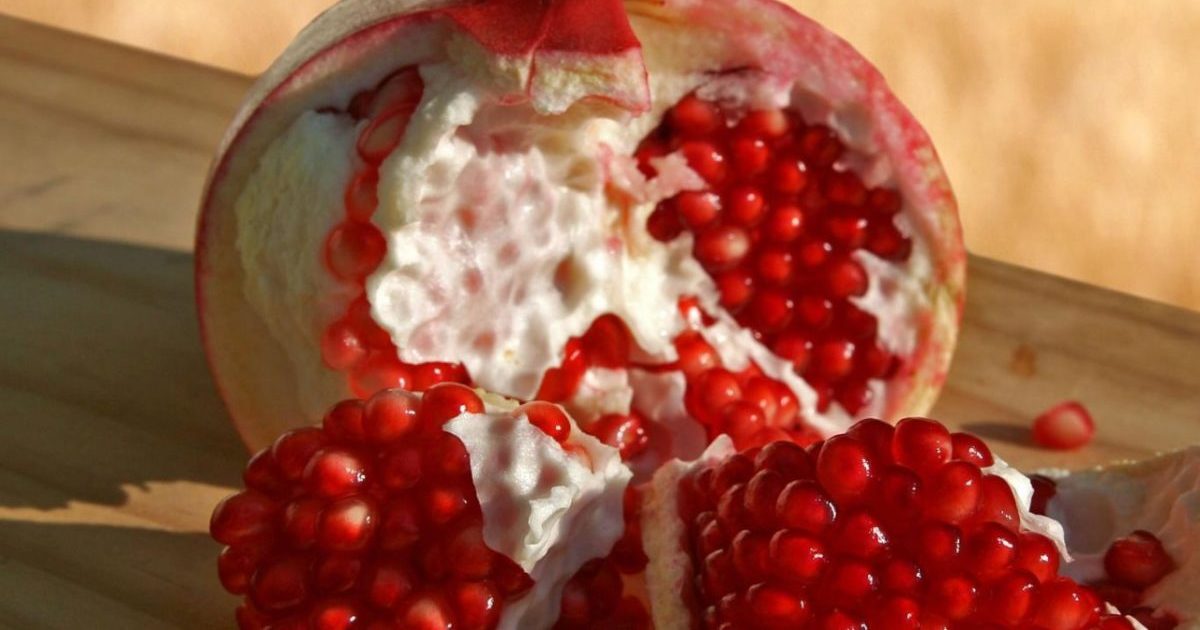 Seedless pomegranate - cutaway appearance, benefits and harms
Seedless pomegranate - cutaway appearance, benefits and harms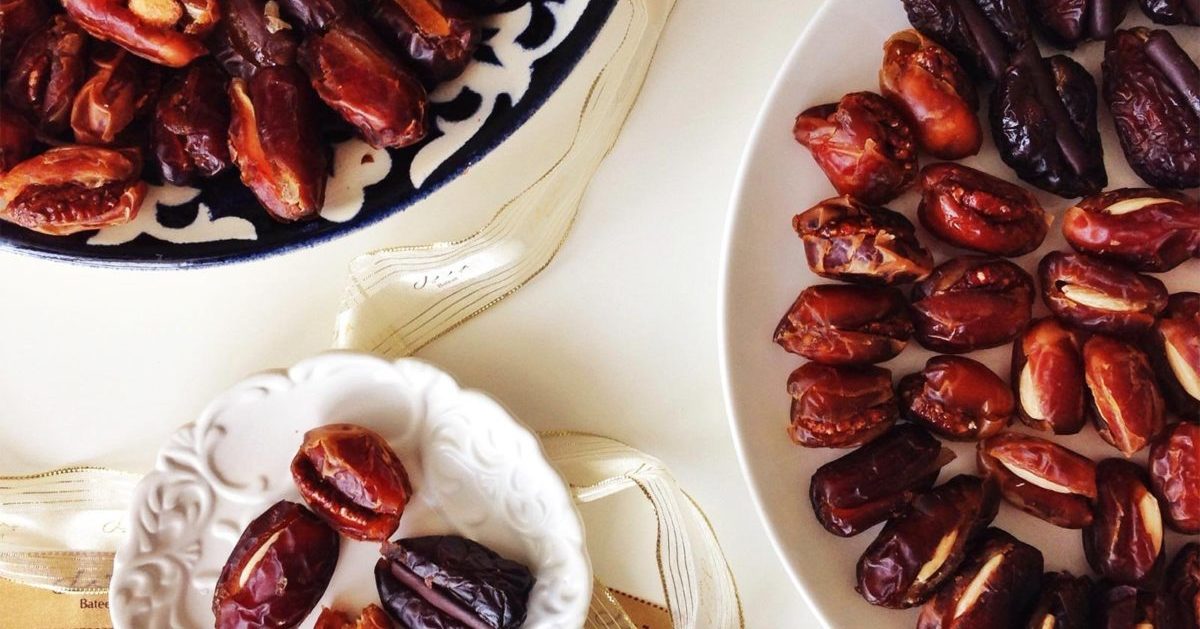 Dates - the benefits and harm to the body, how much you need to eat, properties and calorie content
Dates - the benefits and harm to the body, how much you need to eat, properties and calorie content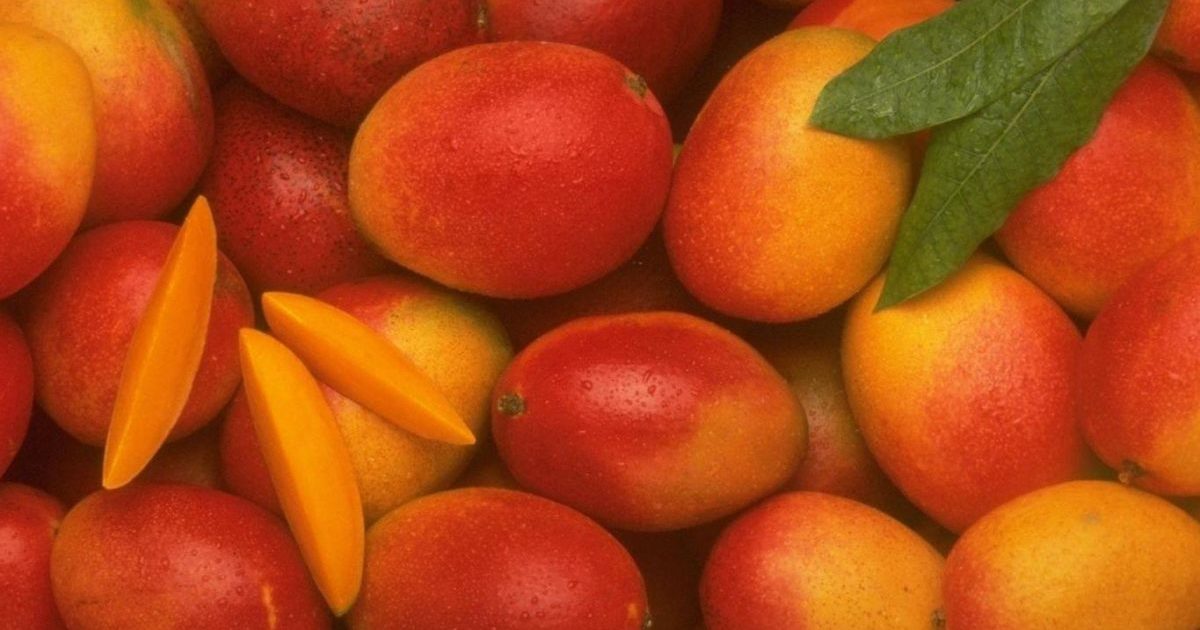 The benefits and harms of mango for the body of women and men - how to eat it?
The benefits and harms of mango for the body of women and men - how to eat it?